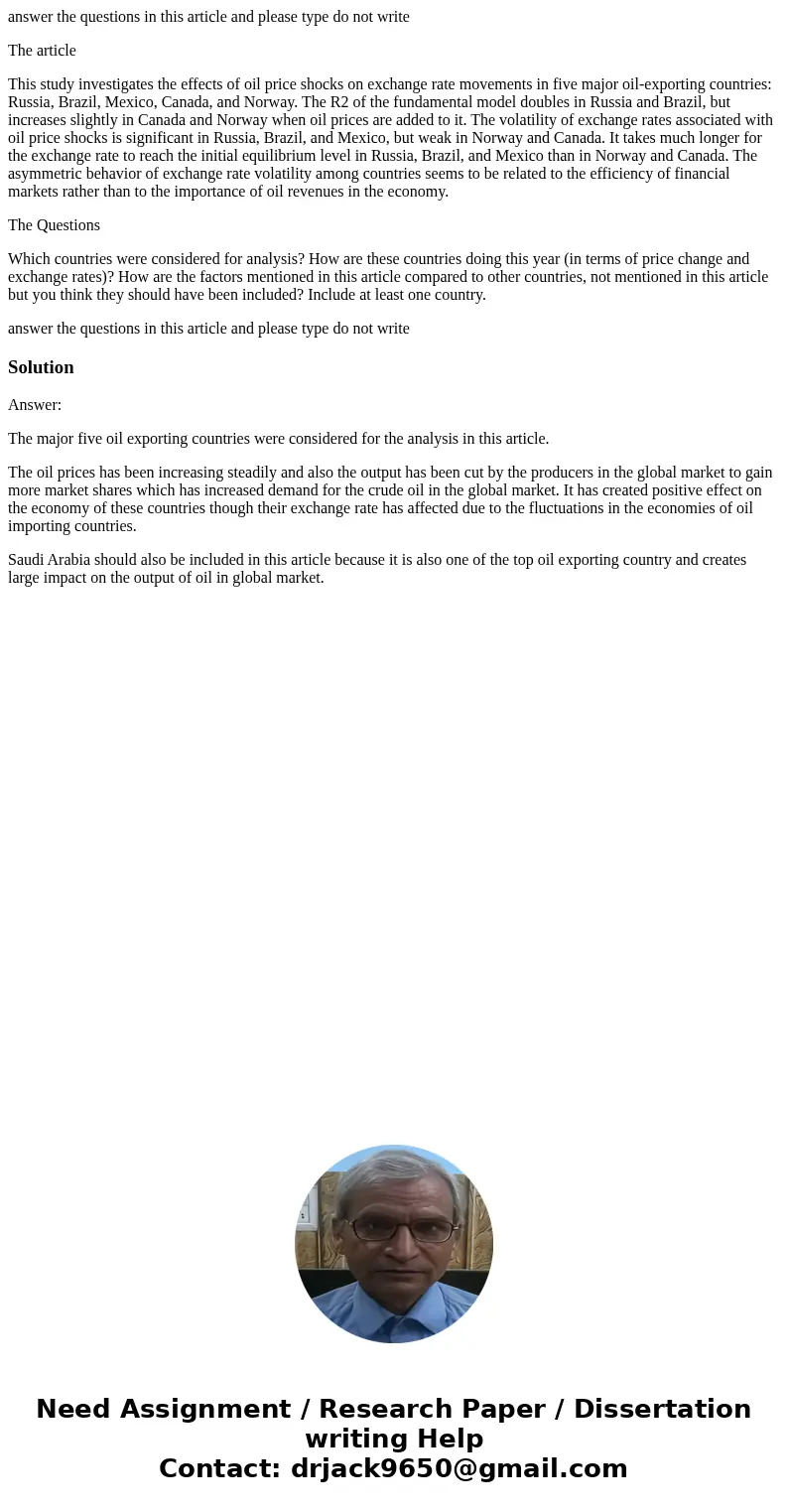answer the questions in this article and please type do not
answer the questions in this article and please type do not write
The article
This study investigates the effects of oil price shocks on exchange rate movements in five major oil-exporting countries: Russia, Brazil, Mexico, Canada, and Norway. The R2 of the fundamental model doubles in Russia and Brazil, but increases slightly in Canada and Norway when oil prices are added to it. The volatility of exchange rates associated with oil price shocks is significant in Russia, Brazil, and Mexico, but weak in Norway and Canada. It takes much longer for the exchange rate to reach the initial equilibrium level in Russia, Brazil, and Mexico than in Norway and Canada. The asymmetric behavior of exchange rate volatility among countries seems to be related to the efficiency of financial markets rather than to the importance of oil revenues in the economy.
The Questions
Which countries were considered for analysis? How are these countries doing this year (in terms of price change and exchange rates)? How are the factors mentioned in this article compared to other countries, not mentioned in this article but you think they should have been included? Include at least one country.
answer the questions in this article and please type do not write
Solution
Answer:
The major five oil exporting countries were considered for the analysis in this article.
The oil prices has been increasing steadily and also the output has been cut by the producers in the global market to gain more market shares which has increased demand for the crude oil in the global market. It has created positive effect on the economy of these countries though their exchange rate has affected due to the fluctuations in the economies of oil importing countries.
Saudi Arabia should also be included in this article because it is also one of the top oil exporting country and creates large impact on the output of oil in global market.

 Homework Sourse
Homework Sourse